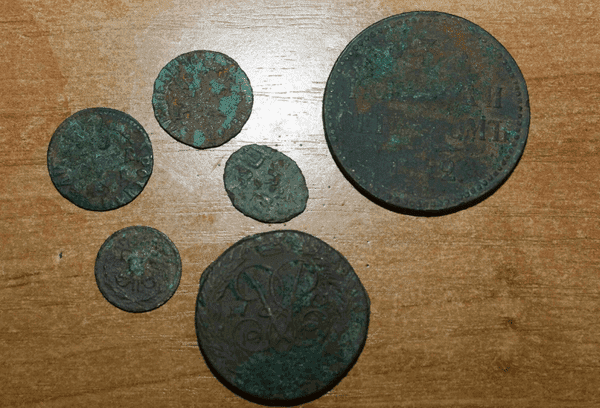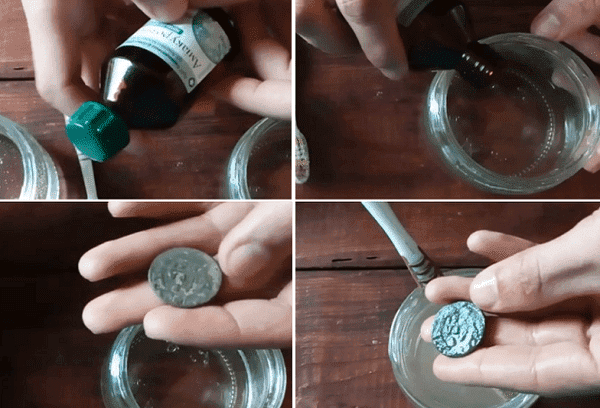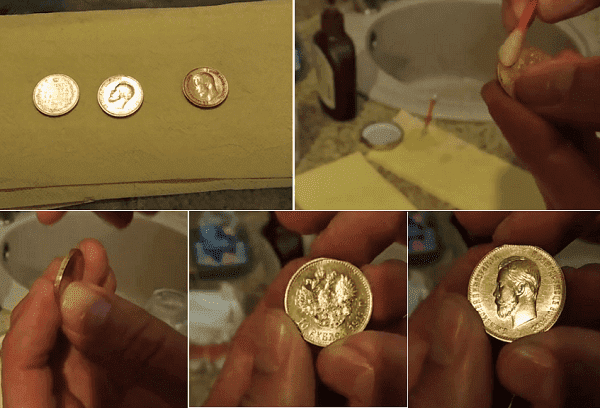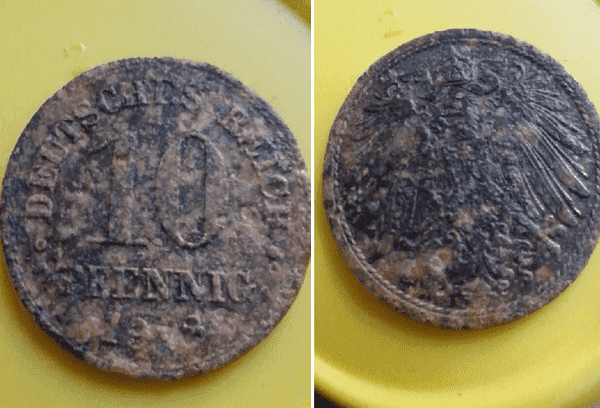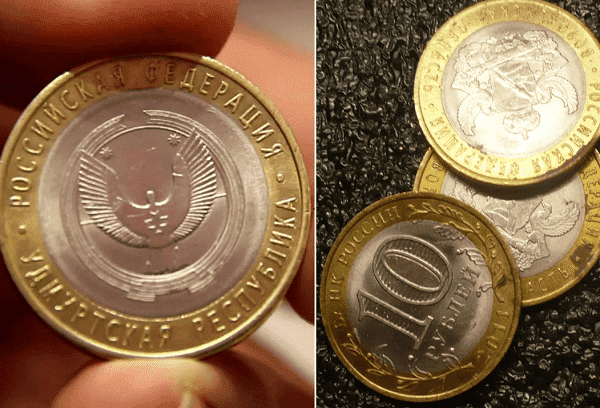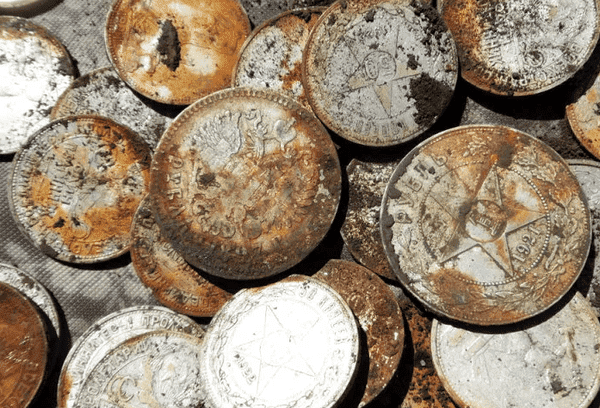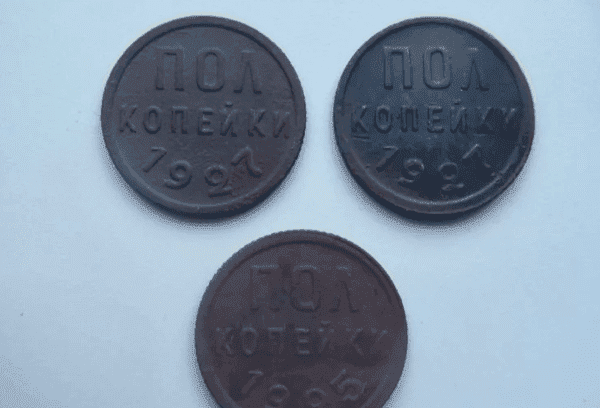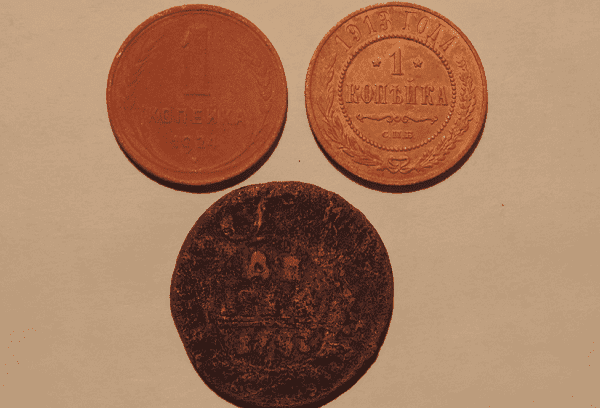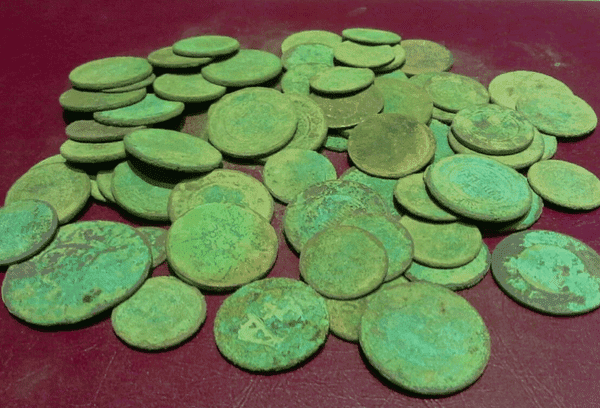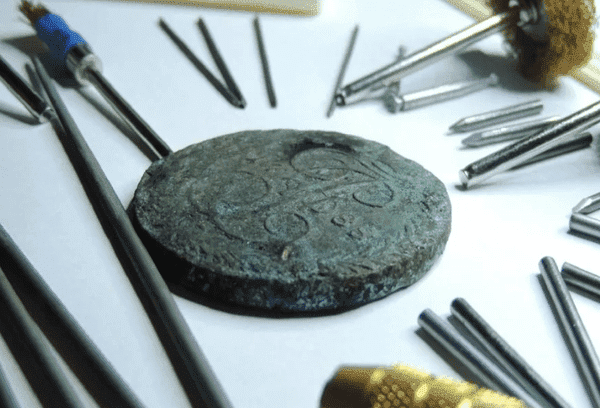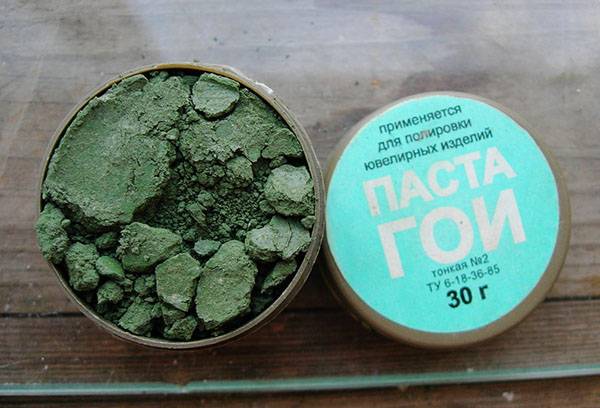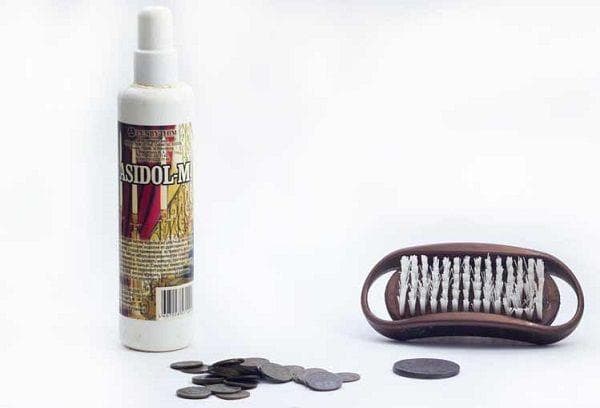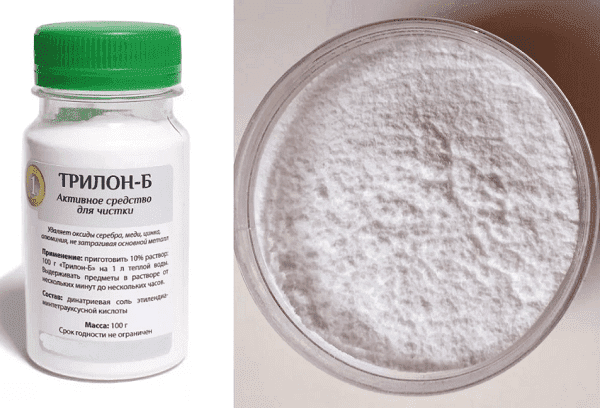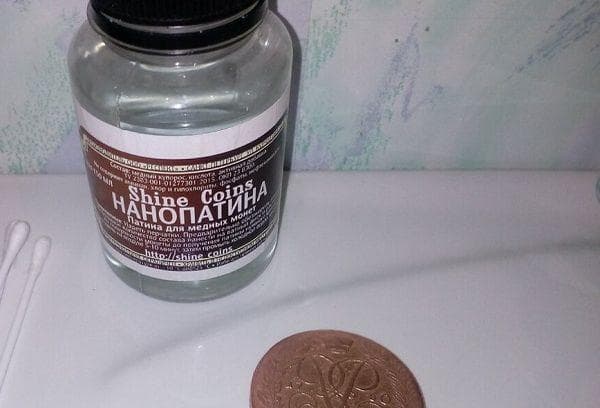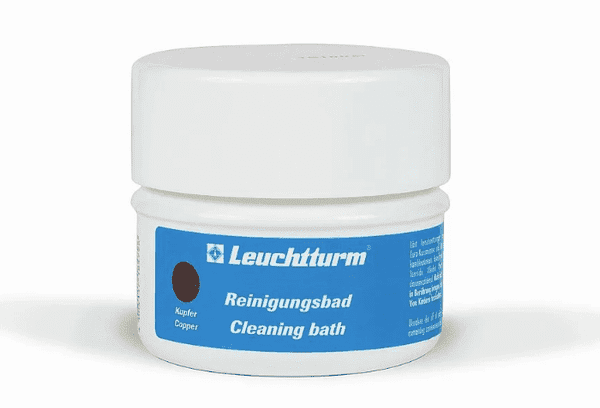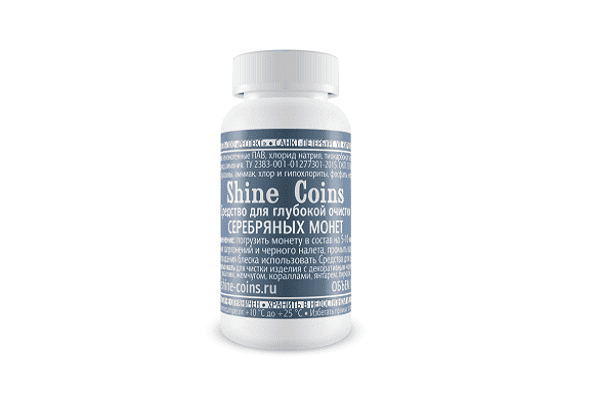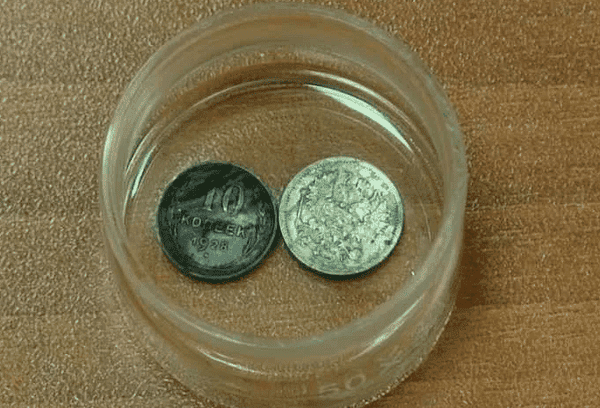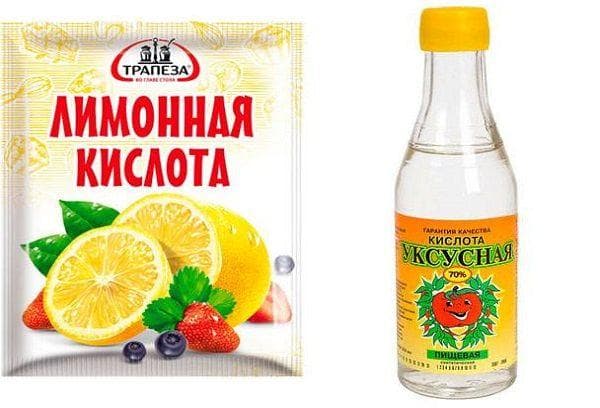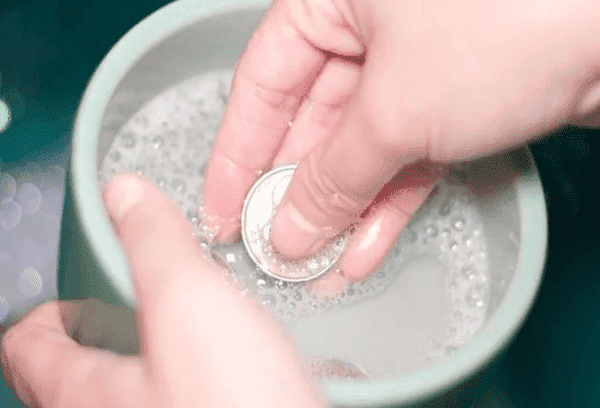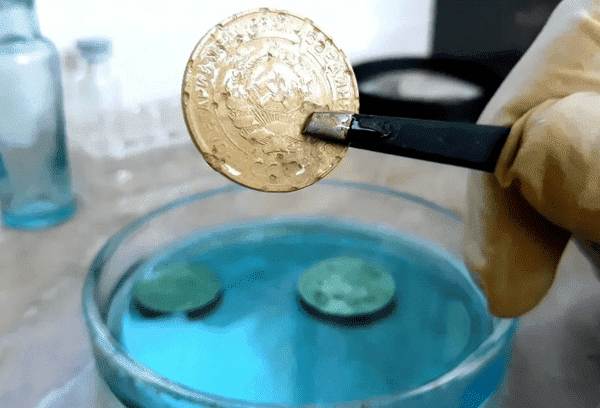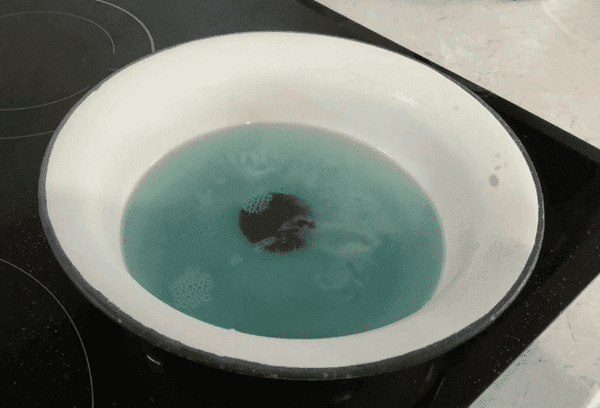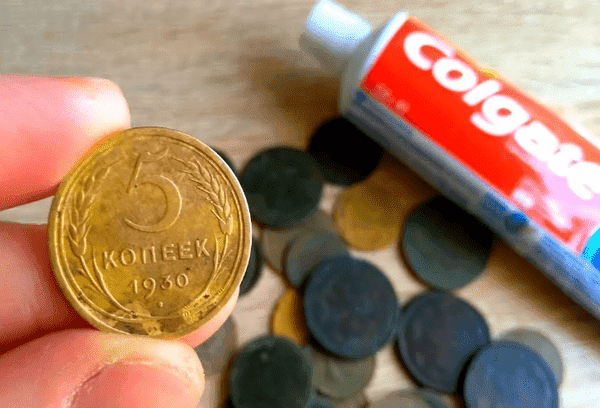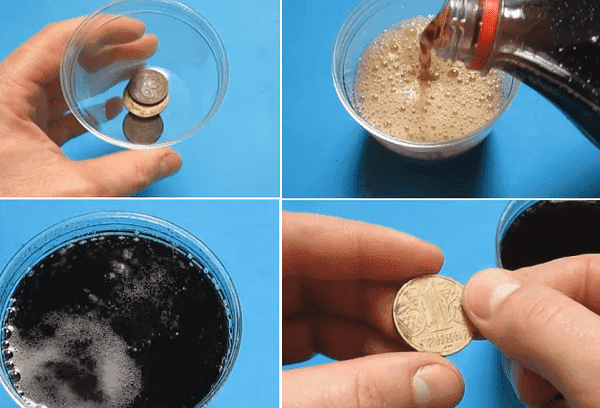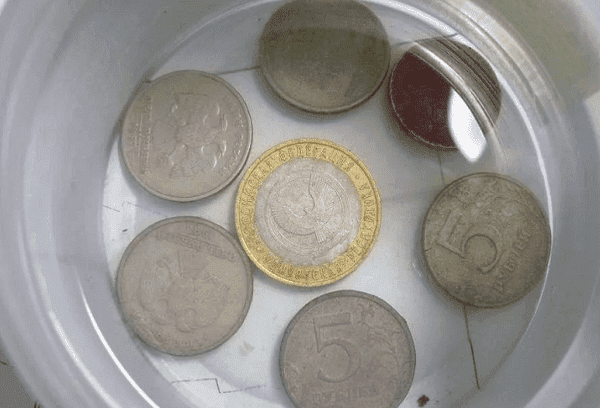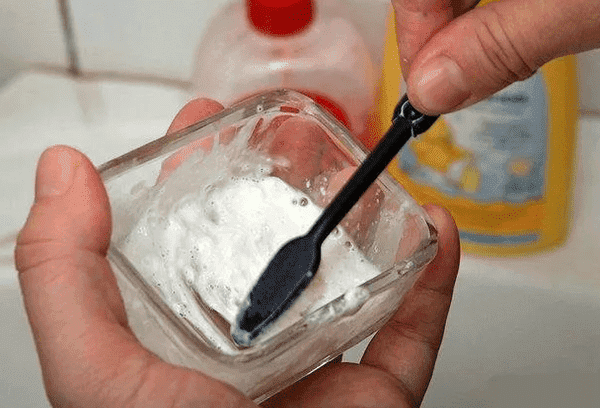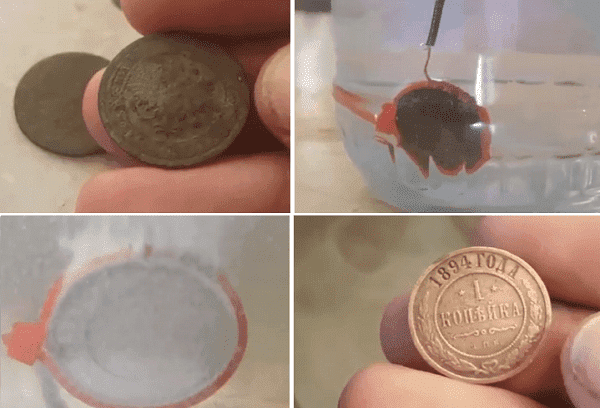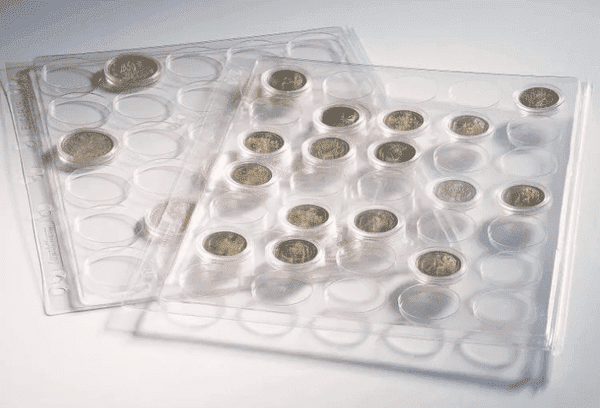How to clean coins quickly and easily at home: tips for collectors
Content:
Any numismatist sooner or later wonders how to clean coins from a collection so as not to damage the appearance of the item. Shiny coins look impressive, but there are a few nuances you should know.
Over time, the surface may become covered with patina - a specific oxidation that protects it from external factors. Such patina is a component of any old coin, its integral part, and if it is cleaned, the value and rarity of the product will significantly decrease.
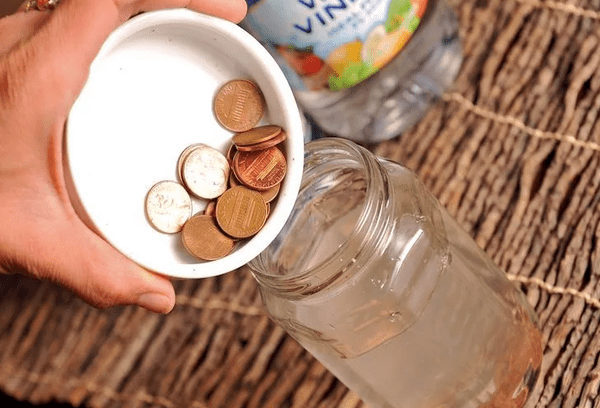
Sometimes the patina covers the coin with streaks or stains, in which case cleaning is warranted. Some products were simply stored in inappropriate conditions; they were often picked up, leaving greasy fingerprints. Such coins also need to be processed.
Features of cleaning coins made of different materials
Depending on the composition of the metal from which the coin is made, you should know some of the nuances of cleaning. Different materials behave differently.
Important. If the coin is of high value, try the cleaning method on a similar but less valuable coin first.
Copper
Copper is a material that is highly susceptible to corrosion. Working with metal requires special care, since under the influence of time and all types of contamination, cracks and scratches form on it more often than on other metals. Copper can also deteriorate from the inside.
To clean copper, ammonia and ammonia are used (to clean red deposits), an acidic environment for green deposits and rust. You can use any method to remove dirt, but you need to monitor the condition of the coin.
Silver
The composition of different silver coins can vary greatly. When working with them, you should pay attention to the sample and the degree of contamination.
In addition, any cleaning agents containing acid, when used on silver, can corrode it, and the coin will lose both value and weight. It is better to use special solutions, as well as alkaline methods. Heavy dirt and deposits can be spot cleaned with acids.
Gold
Gold has become the most popular type of metal for making jewelry for a reason. It reacts poorly with many elements, is resistant to oxidation, and is slightly susceptible to corrosion. His main problem is that the metal is too soft. Therefore, when cleaning it should be handled very carefully, without using strong physical force.
Fine gold coins usually do not require cleaning. But later ones, with various additives and impurities, can form a patina.The best option for cleaning gold is alkaline methods (soap, soda, salt, sugar). Cleaning with ammonia and hydrogen peroxide is suitable.
Zinc
A metal that can darken when exposed to many materials. Products made from this alloy must be handled with extreme care. Only 1% saline solution or special industrial compounds are used. Moreover, it is necessary to strictly follow the instructions - if exposed for too long, the zinc will begin to dissolve.
Bronze
Compared to others, this metal is very easy to clean. Salt, soda, vinegar, and any acids are great.
Bimetallic coins
When working with dual-alloy coins, be sure to ensure that the tools and cleaning method are suitable for both metals. Here it is better to use mechanical rather than chemical methods.
Most modern collectors collect 10-ruble bimetallic coins. They contain brass and cupronickel.
Important. Some coins absolutely cannot be cleaned at home, even if you consider yourself a great specialist. This applies to antique samples that, after processing, lose their value. You just need to wipe them from dust, take them out only with special gloves and keep them in separate storage containers.
Features of pollution
Contamination on metal can have various causes. In addition, the alloys themselves react in their own way to exposure to moisture, air, fat and other substances. That is why they have different colors.
Rust
Corrosion of metal causes rust. The best ways to combat it are to use products containing various acids. But the reaction process must be constantly monitored. After cleaning, the product should be rinsed with soapy water or soda.
Black
Black plaque is either ordinary dirt or that same patina. Dirt can be easily removed by soaking in distilled water or saline solution. But with patina everything is more complicated. Much depends on what material the coin is made of. But the best option is regular soaking and using alcohol.
Redness
Most often it occurs on coins that have been kept closed for a long time without access to air. The best ways to combat red plaque are to use ammonia and ammonia.
Green plaque
The main reason for the formation of greenery is long-term interaction with moisture. It is best removed with products containing acid, including oxalic or sulfuric acid. Citric acid and vinegar help well.
Necessary tools for cleaning coins
There are no perfect tools for cleaning coins. Much depends on the metal from which it is made, its age, the degree and characteristics of contamination. Collectors often arrive at their favorite methods through trial and error. But it is worth noting several tools that are most often used in this work:
- tweezers with a rubberized tip;
- brushes (with plastic, copper or steel bristles, a regular toothbrush);
- cotton buds;
- wooden sticks, skewers, toothpicks;
- needles, pins;
- erasers;
- cotton fabric, knitwear, felt.
The tweezers will prevent the coin from slipping out, and the special tip will not scratch the surface.
Copper bristles are slightly harder than plastic, but softer than steel. Copper and steel are used only to clean the outer layers of dirt. Scratches may occur when the coin touches the surface, so be careful when handling them.Preference should be given to a plastic or toothbrush.
A toothbrush is a universal device that collectors of modern coins prefer to use. It is almost impossible to scratch money with such a tool.
Thin wooden sticks, including regular toothpicks, help remove dirt from almost anywhere on the coin without damaging its surface. But sometimes you have to use hard needles - but in this case there is a risk of scratching the product.
Note. When handling rare coins, be sure to use thin cotton or numismatic gloves. And when using special or household chemicals, use rubber gloves.
Cleaning coins with special means
Special solutions, powders and pastes can be purchased in numismatic stores and via the Internet. If you follow the instructions completely, it is difficult to damage the metal.
Paste GOI
Chromium oxide paste is available in hardware stores. Universal cleaning and polishing material.
Apply the paste to your toothbrush and rub the coin. The paste should be washed with warm water and dried.
Cleans modern coins and bimetal well.
Pasta USSR
Has an alkaline composition, suitable for coins made of bronze, brass and copper.
Asidol-M
The paste consists of surfactants and abrasives. Suitable for cleaning all types of coins and metals. Use with caution on antique items.
Trilon-B
The product is in the form of salt powder. According to the instructions, mix with hot water and place the product in the liquid until completely cleansed.
Suitable for bronze, low-grade silver coins. Safety glasses will be required when working.
Nano-patina
The composition includes copper sulfate and acid. Suitable for all types of metal.Recommended for items found in the ground.
Leuchtturn
Liquids from the German company Leuchtturn are considered one of the best in working with dirt, rust and oxidation on coins. Special reagents are selected for each specific alloy separately. There are compositions for copper, nickel, bimetallic and other coins. By the way, it was this company that developed the ideal composition for zinc coins. The product is sold in numismatic stores.
Shine Coin
A specially designed product for collectors. In addition to cleaning compounds, the line includes products to protect coins from corrosion, tarnishing, to add shine, a mirror surface restorer, and others.
Very important! When working with chemical compounds, it is necessary to use gloves and ensure that the room is well ventilated. Also be sure to follow the instructions!
Using Home Remedies
If you are afraid of damaging an old rare coin, or the contamination is not too strong, you can try simply soaking the coin. Use distilled or boiled water - they have less sediment. Place the money in water for 12-24 hours, rub lightly with a soft cloth or brush. This procedure can be repeated several times. But if this doesn’t help, use one of the folk recipes.
Olive oil
Soak the coin in olive oil for 5-7 days. Check the condition of contamination, wipe the product with a soft cloth or brush. The procedure can be repeated. After removing the dirt, wash the coin with any soap or shampoo and wipe dry.
Citric acid or vinegar
Dilute a packet of citric acid in half a glass of water. When using 9% vinegar, 1 tsp is enough. for 1 glass.
Keep the coin in the solution for no more than a couple of minutes. Try cleaning it and see how the liquid works.
Be sure to rinse the product well in water, or wipe with alcohol.
Soap solution
You can clean coins with liquid soap or dishwashing detergent (for example, Comet or Fairy). The most gentle product is baby soap, the most alkaline-active is household soap. But it’s better to soak them in this solution first.
Dilute liquid soap with water to the consistency of jelly. Rub the bar soap on a grater and pour boiling water over it.
Place the coins for 1-2 hours. Gently remove dirt with a toothbrush, and clean with a toothpick if necessary. Rinse off with plenty of water. Some metals that tolerate alkali well can be kept in soap for several days.
Gold coins can be left for 3-4 hours in a soapy solution, rinsed and wiped dry. It is also possible to boil them for 10-15 minutes.
Mixed method
Prepare a mixture of 100 ml of distilled water or saline solution, 1.3 tsp. food grade citric acid and 2 tsp. liquid soap. Dip the coin into the solution for literally 2-3 minutes and start cleaning. Use a cotton swab, cotton pad, or soft cloth. Small details can be corrected with a toothpick.
Important. Citric acid has an aggressive effect on metal, so you should not clean it using these methods for a long time. In addition, after the procedures it is necessary to thoroughly rinse and dry the product.
Treatment with citric acid, vinegar or soap solution does little to help when cleaning aluminum coins. But you can try with copper, gold, cupronickel and brass alloys.
Boiling in water with oil
This method removes deep-seated dirt well.But before using it, it is better to initially remove the top coating using the above methods. The liquids are mixed in a 1:1 ratio, the coins are “cooked” for 10-15 minutes.
Toothpaste
Apply to a regular toothbrush; it is better to clean coins under running warm water.
It works well when working with products made of brass, cupronickel and aluminum. Copper and silver are unlikely to be cleaned with toothpaste. And precious and semi-precious metals can also be damaged.
Mixing toothpaste with vinegar creates a strong solution that quickly removes rust and oxidation.
"Coca Cola"
This drink has an excellent effect on oxidation on copper and nickel, as it contains phosphoric acid. Excellent for removing rust and dirt.
Pour some soda into a glass or bowl and drop in a coin. It is usually recommended to leave it in the liquid for 2 to 12 hours, but practical experience shows that some alloys can react unexpectedly to Coca-Cola. It is better to take the product out from time to time and check what changes have occurred to it.
Soviet coins are cleaned in Coca-Cola in about 4 hours, without deteriorating the surface. Gold coins will last 2-3 hours. Silver coins can be “boiled” in this soda for 3-5 minutes. They should be washed and dried only after they have cooled completely.
Alcohol
Most metals react positively to alcohol. Coins should be soaked in it for 30-40 minutes. It’s better not to experiment with regular vodka – some formulations contain too many impurities.
The best result can be obtained by mixing alcohol with formic acid. This composition restores the shine of modern coins, specimens from the times of the USSR and bimetal.
Baking soda
1 tbsp. l. Dissolve baking soda in 1 cup boiling water.Leave the coin for 8-10 hours. In the same composition, the product can be boiled for up to half an hour.
Excellent for cleaning gold items and coins. It is gentle on copper.
This is interesting. Baking soda, salt and sugar have almost identical cleansing properties. So you can replace soda.
Ammonia, ammonia
A 5% ammonia solution or regular ammonia, sold in pharmacies, are ideal for working with redness. It is better to clean coins with these products point by point, only in those places where the red coating is clearly visible. It is best to use a cotton swab.
Suitable for copper coins. Silver items can be completely placed in ammonia for 5–10 minutes, but contact with air should not be allowed during this time.
Cleaning coins by electrolysis
By acting on oxide and dirt using current through salt water, the metal is practically not affected. This is a very gentle method, while being quite effective and fast.
- Dilute a solution of 1 liter of water and 2 tbsp. l. table salt.
- Pick up at home (from old household appliances) or purchase a 6-12V power supply. An old phone charger is ideal.
- Divide the wire into two parts, strip about 1-2 cm from the coating.
- Hook one end onto a coin, the other onto another metal. For good adhesion, you can use paper clips or special clamps.
- Place both items in water.
- Turn on the device.
Cleansing takes place in 40-60 minutes. It should be noted that this method works well for fairly new coins. Old ones, with unknown alloys, can behave unexpectedly. But for gold and silver this method is completely unsuitable.
Storing the coin after cleaning
The main rule that must be followed after you have cleaned the coins is that they must be dried well. There is no need to use any special means or physical influences for this. For example, you should not blow dry or dry with a towel. Just leave them to dry, laying them out on a flat surface or dry cloth.
Important! Try not to touch the surface after cleaning with your hands. Especially on old coins, chemical cleaning methods may leave fingerprints that cannot be removed.
To store coins you should use:
- special books;
- files;
- coin holders;
- polymer capsules.
To ensure that coins do not lose their collectible value or become damaged, when cleaning it is necessary to select only methods and tools that have been proven for the given metal. Do not polish the products until they shine, and do not use brute mechanical force. When working with chemical compounds, carefully follow the instructions. This is a very responsible process that will require maximum knowledge of the material and preparation. Over time, each collector selects his own, the most convenient and effective methods.
